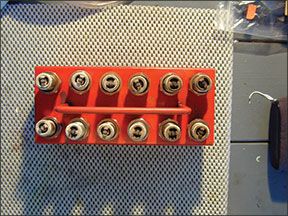It was great to see Jeb Burnside’s February article, “Doing It Yourself,” on owner-performed preventative maintenance (PM) tasks allowed by the FARs. Beside the economic benefits such effort, an aircraft owner will be much more in tune with his or her aircraft and its operating condition. Having been fortunate to have A&P/IAs willing to allow me to help and learn the aircraft during annual inspections and other maintenance endeavors, I am much more informed on issues that arise with continued aircraft operation, and I can give an A&P a heads up on something that may or may not need attention, and I have greater understanding and confidence in the aircraft systems. As Jeb stated, “…it can be a natural extension of your ownership experience,” and I will add rewarding as well.

288
I took a seminar on this a few years ago, at which it was strongly pointed out that any PM work requiring a torque wrench must have a calibration within the preceding 12 months. I have not found this in the FARs, but calibrating a torque wrench annually is not trivial since there are not many shops out there to do this.
A question: In Appendix A of FAR 43, subsection (c) on Preventive Maintenance, paragraph 30(i) strongly suggests an owner/operator holds a certificate of competency from three sources stated in that section: an approved school approved under 142.71(e), the holder of the production certificate that has an approved training program, and finally, another entity with a course approved by the Administrator. What is your understanding/interpretation of this “certificate of competency” for an owner/operator interested in conducting PM on their aircraft?
Bill Quinlan
Via e-mail
Glad you enjoyed the article! That portion of FAR 43, Appendix A, you reference is one we hadn’t looked closely at before. It specifically focuses on Primary category aircraft, which the FAA defines as one that “may have a maximum certificated weight of no more than 2700 pounds, a maximum seating capacity of four, and an unpressurized cabin” among other characteristics. To the best of our knowledge, only a few Primary category aircraft have been certificated.
As we read this regulation, it requires formal and appropriate training to perform manufacturer-approved maintenance and inspections on such aircraft, as well as preventive maintenance.
IFR And Short Fields
You have an awesome magazine, which has been my favorite for years: proactive, relevant and to the point! The February 2014 issue had an outstanding article by Rick Durden on getting the instrument rating, “The Real Deal.” It’s amazing that FAR 91.175 will allow an instrument-rated pilot to shoot an approach with the ground visibility reported below minimums.
In my study of accidents, I’ve learned that ground visibility is not the same as flight visibility. Flight viz is what we see from the cockpit, and is subjective. It’s also what is mentioned in FAR 91.175 regarding the viz needed to legally land. It allows a pilot to hang himself…legally…and plenty of accidents to validate this.
In the March 2014 issue, Mike Hart’s article about soft- and short-field takeoffs, Short And Soft, also is excellent. I read in the Mountain Flying Bible that if you match your flaps to the same angle as your ailerons at maximum deflection, you have the best flap setting for takeoff from a short field…something to think about even if your manual states otherwise, especially for the hybrid takeoff that is short and soft. Thanks for putting out the best safety magazine ever.
Ned Linch CFI/II, CFIG
Thanks for the kind words. We’d be careful using the aileron-deflection method for setting takeoff flaps; it can work well for some airplanes, perhaps not so well for others, depending.




